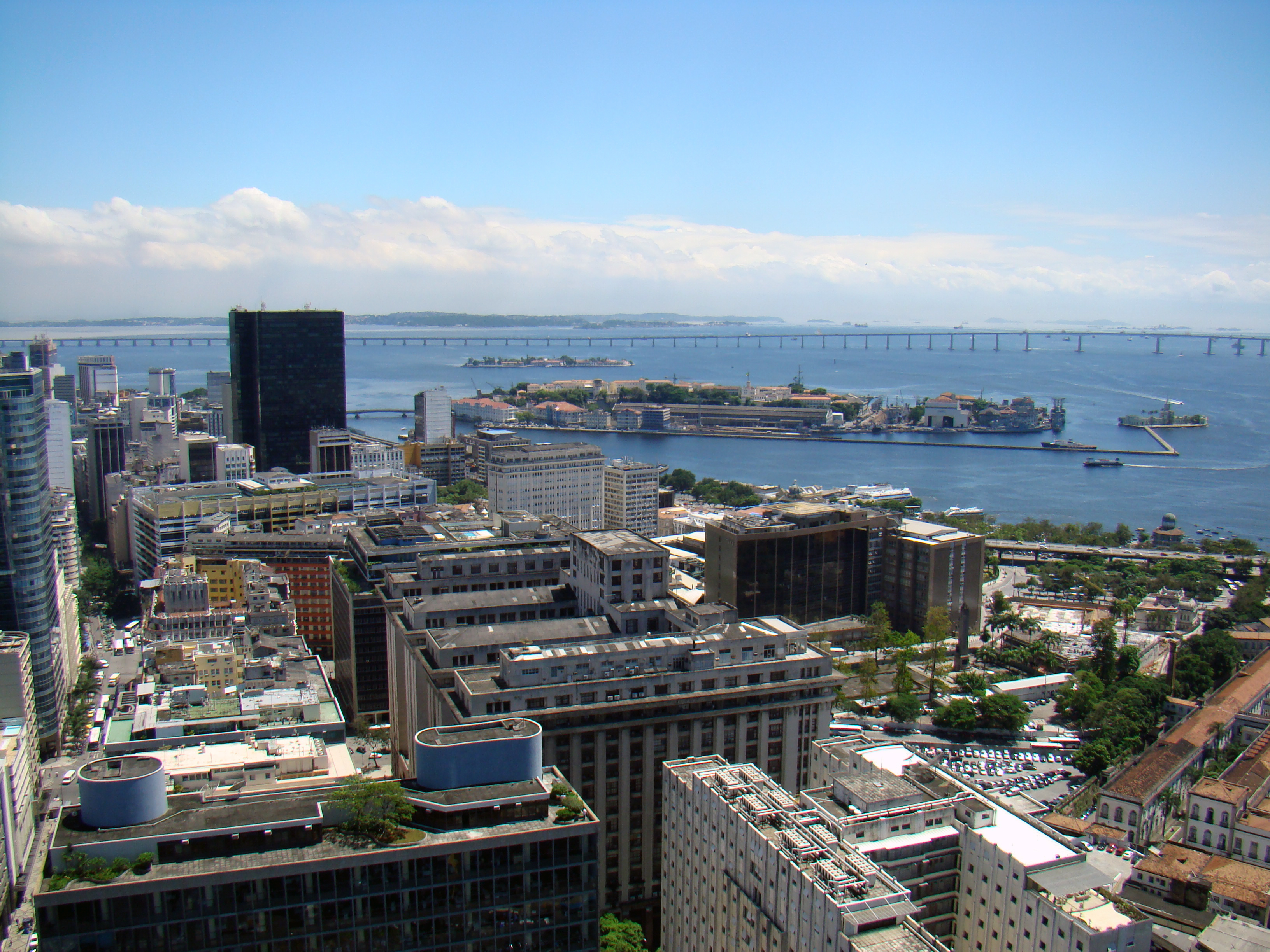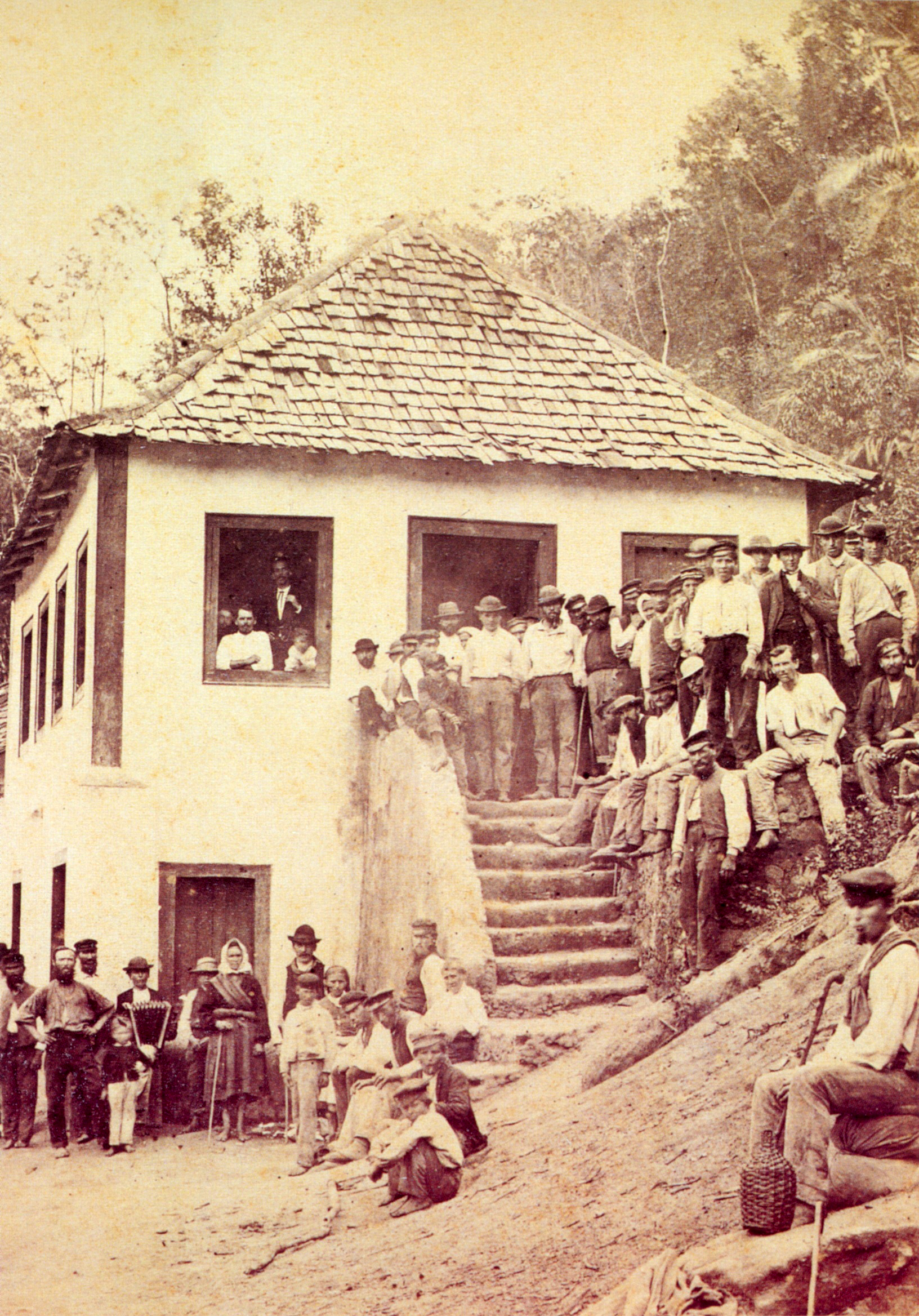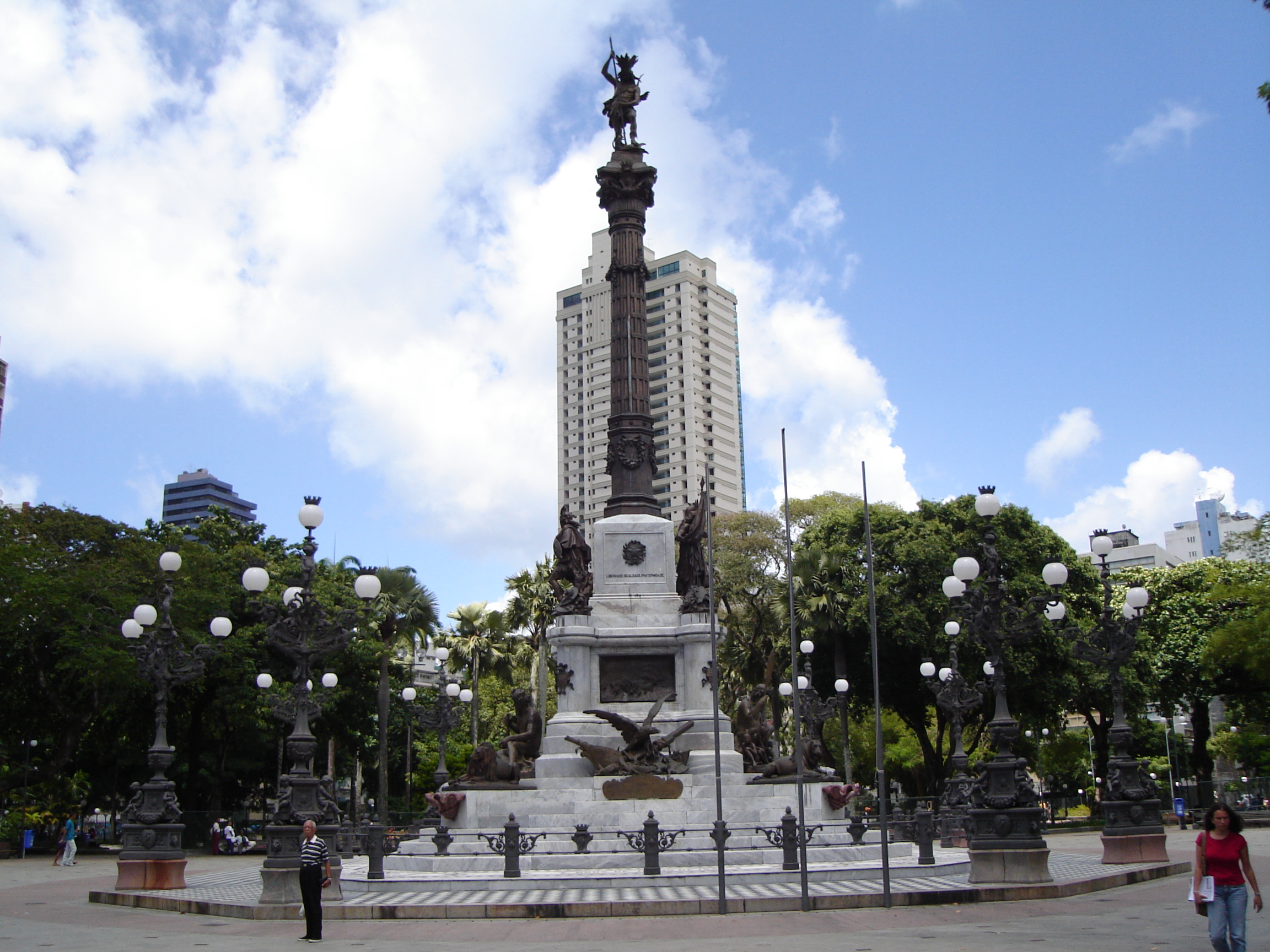|
Projeto TAMAR
The Projeto TAMAR (Portuguese for TAMAR Project, with TAMAR being an abbreviation of Tartarugas Marinhas, the Sea Turtles) is a Brazilian non-profit organization owned by the Chico Mendes Institute for Biodiversity Conservation. The main objective of the project is to protect sea turtles from extinction in the Brazilian coastline. History The TAMAR project was officially created in 1980. The first activities were not centered on the preservation of the turtles, but on the identification of them, their Spawn (biology), spawn sites and seasons, and the main problems caused by poaching. When the first preservation actions began, TAMAR took the first Brazilian pictures of a sea turtle spawning. In 1983, the oceanographers searched for Petrobras, to ask for support on the project. The company analyzed all the actions of the project and decided to support it, by providing fuel to their jeeps. By 2008, TAMAR managed to release more than 8 million turtles in the sea. [...More Info...] [...Related Items...] OR: [Wikipedia] [Google] [Baidu] |
Aracaju
Aracaju () is the capital of the state of Sergipe, Brazil, located in the northeastern part of the country on the coast, about 350 km (217 mi) north of Salvador, Bahia, Salvador. According to the 2020 estimate, the city has 664,908 inhabitants, which represents approximately 33% of the Federated state, state population. Adding to the populations of the municipalities forming the Metropolitan area: Barra dos Coqueiros, Nossa Senhora do Socorro and São Cristóvão. Its Metropolitan Cathedral Nossa Senhora da Conceiçao, dedicated to Our Lady of Immaculate Conception, is the archiepiscopal see of the Roman Catholic Archdiocese of Aracaju. History The extinct unclassified Boime language (also spelled ''Poyme'') was spoken by indigenous peoples near Aracajú on the São Francisco River. The land of present-day Aracaju was located in a ''sesmaria'' given to Pero Gonçalves by the Portuguese crown around 1602. The land consisted of of coastline with small fishing villages ... [...More Info...] [...Related Items...] OR: [Wikipedia] [Google] [Baidu] |
São Paulo (state)
São Paulo (, ) is one of the Federative units of Brazil, 26 states of the Brazil, Federative Republic of Brazil and is named after Paul the Apostle, Saint Paul of Tarsus. It is located in the Southeast Region, Brazil, Southeast Region and is bordered by the states of Minas Gerais to the north and northeast, Paraná (state), Paraná to the south, Rio de Janeiro (state), Rio de Janeiro to the east and Mato Grosso do Sul to the west, in addition to the Atlantic Ocean to the southeast. It is divided into List of municipalities in São Paulo, 645 municipalities. The total area is km2, which is equivalent to 2.9% of Brazil's surface, being slightly larger than the United Kingdom. Its capital is the São Paulo, municipality of São Paulo. With more than 44 million inhabitants in 2022, São Paulo is the Federative units of Brazil#List, most populous Brazilian state (around 22% of the Brazilian population), the List of first-level administrative divisions by population, world's 28th-mos ... [...More Info...] [...Related Items...] OR: [Wikipedia] [Google] [Baidu] |
Campos Dos Goytacazes
Campos dos Goytacazes () is a city located in the northern region of Rio de Janeiro State, Brazil, with a population of 483,540 inhabitants. It is the largest city in Rio de Janeiro (state) outside of the Greater Rio de Janeiro metropolitan area. History Colonization of the area started in the 16th century, and the village of São Salvador de Campos de Goytacazes was founded on May 29, 1677. On March 28, 1835, the village was promoted to city status. The Roman Catholic Diocese of Campos was the see of Bishop Antônio de Castro Mayer, nicknamed "The Lion of Campos", who was one of the bishops who opposed the Vatican II reforms and who teamed with Archbishop Marcel Lefebvre of Dakar to consecrate four independent bishops in Écône, Switzerland, in 1988. Nowadays there are in Campos two Roman Catholic jurisdictions: a Diocese, whose Bishop is Monsignor Roberto Gomes Guimarães and the Personal Apostolic Administration of Saint John Mary Vianney, whose Apostolic Administrator ... [...More Info...] [...Related Items...] OR: [Wikipedia] [Google] [Baidu] |
Rio De Janeiro (state)
Rio de Janeiro () is one of the States of Brazil, 27 federative units of Brazil. It has the second largest economy of Brazil, with the largest being that of the state of São Paulo (state), São Paulo. The state, which has 8.2% of the Brazilian population, is responsible for 9.2% of the Brazilian Gross domestic product, GDP. The state of Rio de Janeiro is located within the Brazilian geopolitical region classified as the Southeast Region, Brazil, Southeast (assigned by Brazilian Institute of Geography and Statistics, IBGE). Rio de Janeiro shares borders with all the other states in the same Southeast macroregion: Minas Gerais (North, N and Ordinal directions, NW), Espírito Santo (Ordinal direction, NE) and São Paulo (state), São Paulo (Ordinal directions, SW). It is bounded on the east and south by the South Atlantic Ocean. Rio de Janeiro has an area of . Its capital is the city of Rio de Janeiro, Rio de Janeiro, Rio de Janeiro, which was the capital of the Portuguese Colonial ... [...More Info...] [...Related Items...] OR: [Wikipedia] [Google] [Baidu] |
Anchieta, Espírito Santo
Anchieta is a municipality in the Brazilian state of Espírito Santo. Its population was 29,779 in 2020 and its area is . Its average elevation is above sea level. Formerly known as ''Reritiba'', the city was renamed after the Jesuit Spanish missionary and saint José de Anchieta José de Anchieta y Díaz de Clavijo, SJ (Joseph of Anchieta; 19 March 1534 – 9 June 1597) was a Canarian Jesuit missionary to the Portuguese colony of Brazil in the second half of the 16th century. A highly influential figure in Brazil's h ... (1534-1597). See also * Santuário Nacional de São José de Anchieta References Municipalities in Espírito Santo Populated coastal places in Espírito Santo {{EspiritoSanto-geo-stub ... [...More Info...] [...Related Items...] OR: [Wikipedia] [Google] [Baidu] |
Comboios Biological Reserve
Comboios Biological Reserve () is a biological reserve in the state of Espírito Santo, Brazil. Location Comboios Biological Reserve is in the municipalities of Aracruz and Linhares, Espírito Santo. The coastal biome reserve which has an area of was established by decree of 25 September 1984. It became part of the Central Atlantic Forest Ecological Corridor, created in 2002. Conservation As of 2009 the Biological Reserve was a "strict nature reserve" under IUCN protected area category Ia. Objectives are full preservation of biota and other natural attributes. The reserve is the state headquarters for Projeto TAMAR, the turtle conservation organization. The reserve's aquarium contains giant sea turtles, and the residents of nearby Regência make their living from turtle conservation as well as fishing. Protected species in the conservation unit are Amazona rhodocorytha, Atta robusta, Maned sloth, Cnemidophorus and Panthera onca The jaguar (''Panthera onca'') is a ... [...More Info...] [...Related Items...] OR: [Wikipedia] [Google] [Baidu] |
Linhares
Linhares is a Municipalities of Brazil, municipality in the state of Espírito Santo, Brazil, north of the state capital, Vitória, Brazil, Vitória. It is the largest municipality by area in the state, at 9,501.6 km2, and has a population of 176,688 people as of 2020. The municipality is named in honor of Rodrigo de Souza Coutinho, Counts and Dukes of Linhares, Count of Linhares, who was a minister in the Brazilian government in the first two decades of the 19th century. The city took international knowledge, being the residence of Miss Gay Brazil 2013 and 2014. History The area today known as Linhares was once inhabited by the Botocudo. The town, founded by Europeans on August 22, 1800, was destroyed by the Indians during a war in 1809. The area was visited by List of Brazilian monarchs, Brazilian Emperor Pedro II of Brazil, Dom Pedro II in 1860. An island he set foot on is still known as the Emperor's Island. Linhares became a municipality in 1945, when it was detached ... [...More Info...] [...Related Items...] OR: [Wikipedia] [Google] [Baidu] |
São Mateus, Espírito Santo
São Mateus is the eighth oldest Municipalities of Brazil, municipality in Brazil and the seventh most populous in the States of Brazil, state of Espírito Santo. Founded on September 21, 1544, it gained municipal autonomy in 1764. Originally named ''Povoado do Cricaré'', it was renamed São Mateus in 1566 by Father Joseph of Anchieta. According to 2019 Brazilian Institute of Geography and Statistics, IBGE estimates, its population is approximately 130,000 inhabitants. São Mateus is considered a milestone in the colonization of Espírito Santo's territory. It has the largest Afro-descendant population in the state, a legacy of the Port of São Mateus, which, until the mid-19th century, was a major entry point for enslaved Africans in Brazil. The municipality also includes descendants of Italian Brazilians, Italian immigrants, who contributed to the colonization of its rural hinterlands. Its economy is driven by service provision and the exploration and production of petroleum. P ... [...More Info...] [...Related Items...] OR: [Wikipedia] [Google] [Baidu] |
Conceição Da Barra
Conceição da Barra is a Brazilian municipality in the state of Espírito Santo. The city is the northernmost coastal city of the state. Its population was 31,273 (2020) and its area is 1,188.044 km². Geography The municipality contains the Itaúnas State Park, created in 1991, which protects the coast up to the border with Bahia Bahia () is one of the 26 Federative units of Brazil, states of Brazil, located in the Northeast Region, Brazil, Northeast Region of the country. It is the fourth-largest Brazilian state by population (after São Paulo (state), São Paulo, Mina .... It contains the Rio Preto National Forest. It contains part of the Córrego Grande Biological Reserve. The climate is tropical, warm and mostly humid, with one or two dry months. Average annual temperature is , and average annual rainfall is . References Populated places established in 1891 Populated coastal places in Espírito Santo 1891 establishments in Brazil Municipalities in ... [...More Info...] [...Related Items...] OR: [Wikipedia] [Google] [Baidu] |
Espírito Santo
Espírito Santo (; ) is a state in southeastern Brazil. Its capital is Vitória, and its largest city is Serra. With an extensive coastline, the state hosts some of the country's main ports, and its beaches are significant tourist attractions. The state is divided into 78 municipalities. The capital, Vitória, is located on an island, which borders the municipalities of Vila Velha, Cariacica, and Serra. These municipalities, plus the outer cities of Fundão and Guarapari, constitute the state's main metro area. In the northern extremes of Espírito Santo is Itaúnas, in the municipality of Conceição da Barra, which is a tourist location known for its sand dunes and forró tradition. The Captaincy of Espírito Santo was carved out of the Captaincy of Bahia in the 18th century, during the colonial rule of Brazil, and named after a 16th-century captaincy covering roughly the same area of coast. Following the elevation of Brazil to a constituent kingdom of the Un ... [...More Info...] [...Related Items...] OR: [Wikipedia] [Google] [Baidu] |
Salvador, Bahia
Salvador () is a Municipalities of Brazil, Brazilian municipality and capital city of the Federative units of Brazil, state of Bahia. Situated in the Zona da Mata in the Northeast Region, Brazil, Northeast Region of Brazil, Salvador is recognized throughout the country and internationally for its #Cuisine, cuisine, #Music, music, and #Pelourinho, architecture. The African influence in many cultural aspects of the city makes it a center of Afro-Brazilian culture. As the Capitals of Brazil, first capital of Colonial Brazil, the city is List of oldest continuously inhabited cities, one of the oldest in the Americas. Its foundation in 1549 by Tomé de Sousa took place on account of the implementation of the List of governors-general of Brazil, General Government of Brazil by the Portuguese Empire. Centralization as a capital, along with Portuguese colonization, were important factors in shaping the profile of the municipality, as were certain geographic characteristics. The construct ... [...More Info...] [...Related Items...] OR: [Wikipedia] [Google] [Baidu] |





